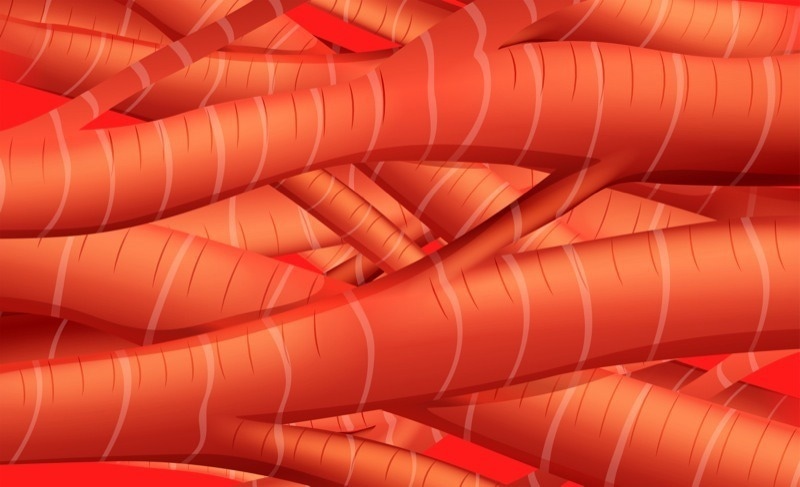Three-dimensional (3D) printing has been widely applied to almost every industry, ranging from those responsible for producing common goods like key holders, bowls and cutlery to vegan-friendly companies looking to replace traditional meats with 3D printed plant-based options.

Image Credit: BlueRingMedia/Shutterstock.com
Several developments have been made to further advance the 3D printing of biological materials, particularly 3D muscle tissue, for a wide range of uses in drug discovery, regenerative medicine and even soft robotics.
What is 3D Bioprinting?
The field of 3D bioprinting has gained a tremendous amount of attention as a result of the rapid advancements that 3D printers have experienced over the past several years. In tissue engineering and regenerative medicine, 3D bioprinting enables researchers to precisely deposit active biological molecules, cells and matrix components into a single desired location, which is advantageous for achieving the ideal spatial relationship between individual elements of the given tissue.
Furthermore, 3D bioprinting also offers a more accurate model for researchers to evaluate the safety and efficacy of novel pharmacological compounds.
Early 3D Printed Muscle for Drug Development
Some of the key advantages associated with utilizing 3D human organotypic tissue models are that they provide researchers with a more predictive picture of human tissue physiology following exposure to a given drug. One of the earliest studies that investigated 3D printed muscle tissue was conducted in 2015 by a group of scientists at the Zurich University of Applied Sciences (ZHAW).
The primary goal of this 2015 study was to create an accurate 3D printed test sample that surpassed the specificity of traditional preclinical cell culture and animal models. Dr. Ursula Graf-Hausner’s team developed their novel 3D printed muscle tissue to use this model for future drug discovery studies on degenerative muscle and tendon diseases. For example, Duchenne muscular dystrophy and amyotrophic lateral sclerosis (ALS), both of which currently lack curative drug treatments.
On a 24-well plate system, Dr. Hausner’s team inserted two posts into each well to allow for proper tissue attachment and functional differentiation. Through the use of a 3D printer called 3DDiscovery, the ZHAW team fabricated the tissue by printing alternating layers of matrix and cells into each well.
For the matrix component of the tissue, BioInkTM, which is a chemically-defined hydrogel was used, whereas the cells were directly incorporated into the matrix layers through an inkjet.
Recent Advancements in 3D Printed Muscle Cells
When the ZHAW study was published, 3D bioprinting was in its very early stages. As a result, while the tissue generated by the ZHAW researchers exhibited mechanical tension and a more accurate in vitro profile of both human skeletal muscle and tendon tissue, this 3D printed tissue lacked the reproducibility, robustness and cost-efficiency that would be required for more high-throughput drug discovery studies.
Since then, various efforts have been made to create new and improved 3D printed muscle tissues that are comprised of highly viable and organized cell structures. For example, a 2018 Nature Scientific Reports study created several 3D bioprinted skeletal muscle constructs with muscle progenitor cells that were isolated from human muscle tissue biopsies.
Upon analyzing the in vitro characteristics of their 3D printed muscle, the researchers determined that their 3D printed tissue was capable of maintaining the vasculature and neuronal properties associated with normal muscle tissue.
The results of this study provide a promising future for the development of treatments aimed at curing muscle defect injuries and other tissue regeneration projects.
Soft Robotics and 3D Printed Muscle Tissue
At the end of December 2018, a group of scientists from the Institute for Bioengineering of Catalonia in Barcelona, Spain discussed their findings on the application of 3D printed muscle tissue for soft robotics applications. The 3D bioprinted muscle tissue was derived from skeletal muscle tissue aligned with myotube structures.
These 3D printed muscle tissues were found to function similarly to human muscles in terms of their responsiveness to stretching and shortening, as well as their ability to generate forces when provided with certain commands.
The researchers of this study believe that the incorporation of biological tissues, like human skeletal muscle, into soft robotics, will improve the ability of these robotic devices to exhibit behavior that more closely mimics that of natural organisms.
References and Further Reading
Bishop, E. S., Mostafa, S., Pakvasa, M., Luu, H. H., Lee, M. J., Wolf, J. M., et al. (2017). 3-D bioprinting technologies in tissue engineering and regenerative medicine: Current and future trends. Genes & Diseases 4(4); 185-195. DOI: 10.1016/j.gendis.2017.10.002.
Rimann, M., Laternser, S., Keller, H., Leupin, O., Graf-Hausner, U. (2015). 3D Bioprinted Muscle and Tendon Tissues for Drug Development. Chimia 69; 65-67. DOI: 10.2533/chima.2015.65.
Kim, J. H., Seol, Y., Ko, I. K., Kang, H., Lee, Y. K., Yoo, J. J., Atala, A., & Lee, S. J. (2018). 3D Bioprinted Human Skeletal Muscle Constructs for Muscle Function Restoration. Nature Scientific Reports 8(12307). DOI: 10.1038/s41598-018-29968-5.
“Catalonia Researchers 3D Bioprint Muscles for Soft Robotics” – 3D Printing Industry
Disclaimer: The views expressed here are those of the author expressed in their private capacity and do not necessarily represent the views of AZoM.com Limited T/A AZoNetwork the owner and operator of this website. This disclaimer forms part of the Terms and conditions of use of this website.